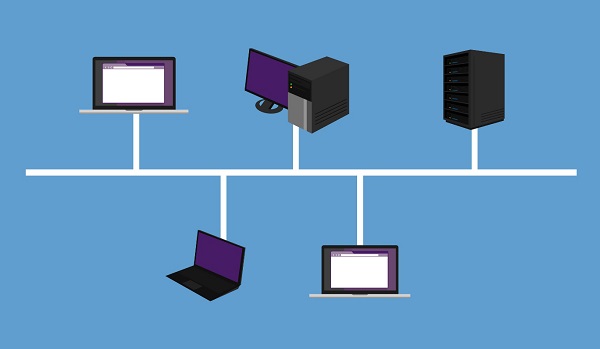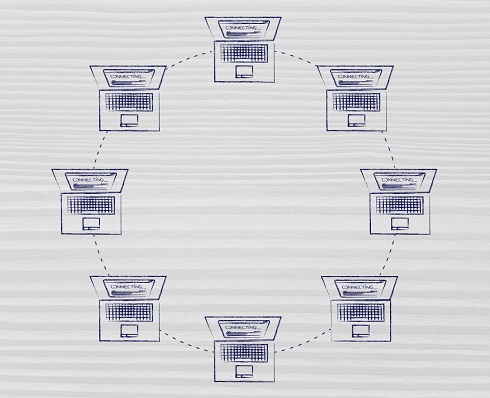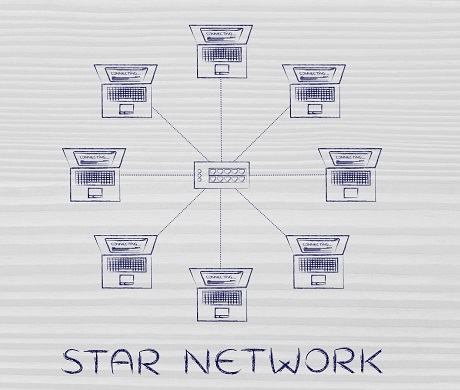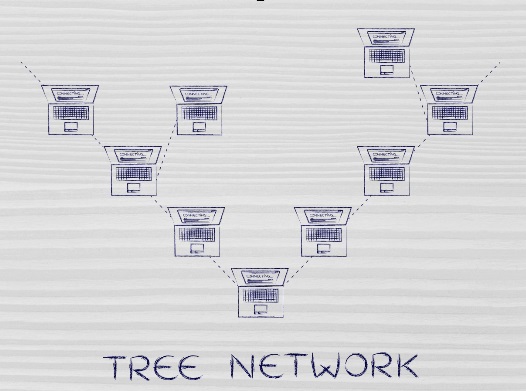
- Home
- Introduction
- History of Networking
- Terminologies
- Switching Techniques
- Transmission Media
- Network Devices
- Network Topologies
- Types of Networks
- Network Protocols
- Mobile Communication Protocols
- Mobile Communication Technologies
- Email Protocols
- VoIP
- Wireless Technologies
- Network Security
- Firewall
- Cookies
- Hacking
- Security Acts & Laws
- Web Services
Network Topologies
The way in which devices are interconnected to form a network is called network topology. Some of the factors that affect choice of topology for a network are −
Cost − Installation cost is a very important factor in overall cost of setting up an infrastructure. So cable lengths, distance between nodes, location of servers, etc. have to be considered when designing a network.
Flexibility − Topology of a network should be flexible enough to allow reconfiguration of office set up, addition of new nodes and relocation of existing nodes.
Reliability − Network should be designed in such a way that it has minimum down time. Failure of one node or a segment of cabling should not render the whole network useless.
Scalability − Network topology should be scalable, i.e. it can accommodate load of new devices and nodes without perceptible drop in performance.
Ease of installation − Network should be easy to install in terms of hardware, software and technical personnel requirements.
Ease of maintenance − Troubleshooting and maintenance of network should be easy.
Bus Topology
Data network with bus topology has a linear transmission cable, usually coaxial, to which many network devices and workstations are attached along the length. Server is at one end of the bus. When a workstation has to send data, it transmits packets with destination address in its header along the bus.

The data travels in both the directions along the bus. When the destination terminal sees the data, it copies it to the local disk.
Advantages of Bus Topology
These are the advantages of using bus topology −
- Easy to install and maintain
- Can be extended easily
- Very reliable because of single transmission line
Disadvantages of Bus Topology
These are some disadvantages of using bus topology −
- Troubleshooting is difficult as there is no single point of control
- One faulty node can bring the whole network down
- Dumb terminals cannot be connected to the bus
Ring Topology
In ring topology each terminal is connected to exactly two nodes, giving the network a circular shape. Data travels in only one pre-determined direction.

When a terminal has to send data, it transmits it to the neighboring node which transmits it to the next one. Before further transmission data may be amplified. In this way, data raverses the network and reaches the destination node, which removes it from the network. If the data reaches the sender, it removes the data and resends it later.
Advantages of Ring Topology
These are the advantages of using ring topology −
- Small cable segments are needed to connect two nodes
- Ideal for optical fibres as data travels in only one direction
- Very high transmission speeds possible
Disadvantages of Ring Topology
These are some the disadvantages of using ring topology −
Failure of single node brings down the whole network
Troubleshooting is difficult as many nodes may have to be inspected before faulty one is identified
Difficult to remove one or more nodes while keeping the rest of the network intact
Star Topology
In star topology, server is connected to each node individually. Server is also called the central node. Any exchange of data between two nodes must take place through the server. It is the most popular topology for information and voice networks as central node can process data received from source node before sending it to the destination node.

Advantages of Star Topology
These are the advantages of using star topology −
Failure of one node does not affect the network
Troubleshooting is easy as faulty node can be detected from central node immediately
Simple access protocols required as one of the communicating nodes is always the central node
Disadvantages of Star Topology
These are the disadvantages of using star topology −
Long cables may be required to connect each node to the server
Failure of central node brings down the whole network
Tree Topology
Tree topology has a group of star networks connected to a linear bus backbone cable. It incorporates features of both star and bus topologies. Tree topology is also called hierarchical topology.

Advantages of Tree Topology
These are some of the advantages of using tree topology −
Existing network can be easily expanded
Point-to-point wiring for individual segments means easier installation and maintenance
Well suited for temporary networks
Disadvantages of Tree Topology
These are some of the disadvantages of using tree topology −
Technical expertise required to configure and wire tree topology
Failure of backbone cable brings down entire network
Insecure network
Maintenance difficult for large networks